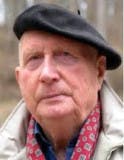Studied Russian language and literature at Vilnius University from 1950 to 1953. In 1952-1953, 1959-1960, 1973 he worked in the editorial offices of cultural publications, and in 1978-1979 he worked as a decorative artist. In 1989, he was responsible for the establishment of the Lithuanian PEN Centre in Lithuania, and was its first president.
During his lifetime, he wrote children's short stories. In Lithuanian prose, he created the model of the concise novella, and supplemented it with themes of the city and intelligentsia. Ethical psychological issues predominate in his work, characterised by laconic style. In Lithuanian prose, he created a new type of intelligentsia: he is educated, has a distinctive life style, and is thus opposed to clichéd communication and the spirit of collectivism. The characters experience a conflict between their poetic nature and the bourgeois, routine nature of their environment. In the 1960s, he applied a restrained narrative style, symmetry of composition, silences, pauses and subtext to the Lithuanian novella. The double plan of his best novels is an ironic denial of the Soviet order and the inner autonomy of the character. The theme of East Prussia is explored in the short story "Wandering Sands" and the trilogy "Zone of Destiny". The innovative novel "In the Middle of a Large Field..." tells the story of Lithuanians fighting on opposite sides in World War II, the novel "That Cold Winter", the short story "Reflections in the Mirror of the Sea" - about the creator's distraction, and "The Project" - about the failed creative and personal life of an architect. The novel "The Enchanted City" is a satirical allegory of totalitarianism, while the novel "Pilgrim" reveals the situation of an ambitious artist after the restoration of independence. During the Soviet occupation, some of the novels were heavily criticised and officially condemned.
Translated the works of E. Hemingway and R. Bradbury and published topical journalism. He has painted (since 1961) landscapes and abstract compositions, held several exhibitions in Lithuania and abroad, and illustrated his books. His works have been translated into 10 European languages
